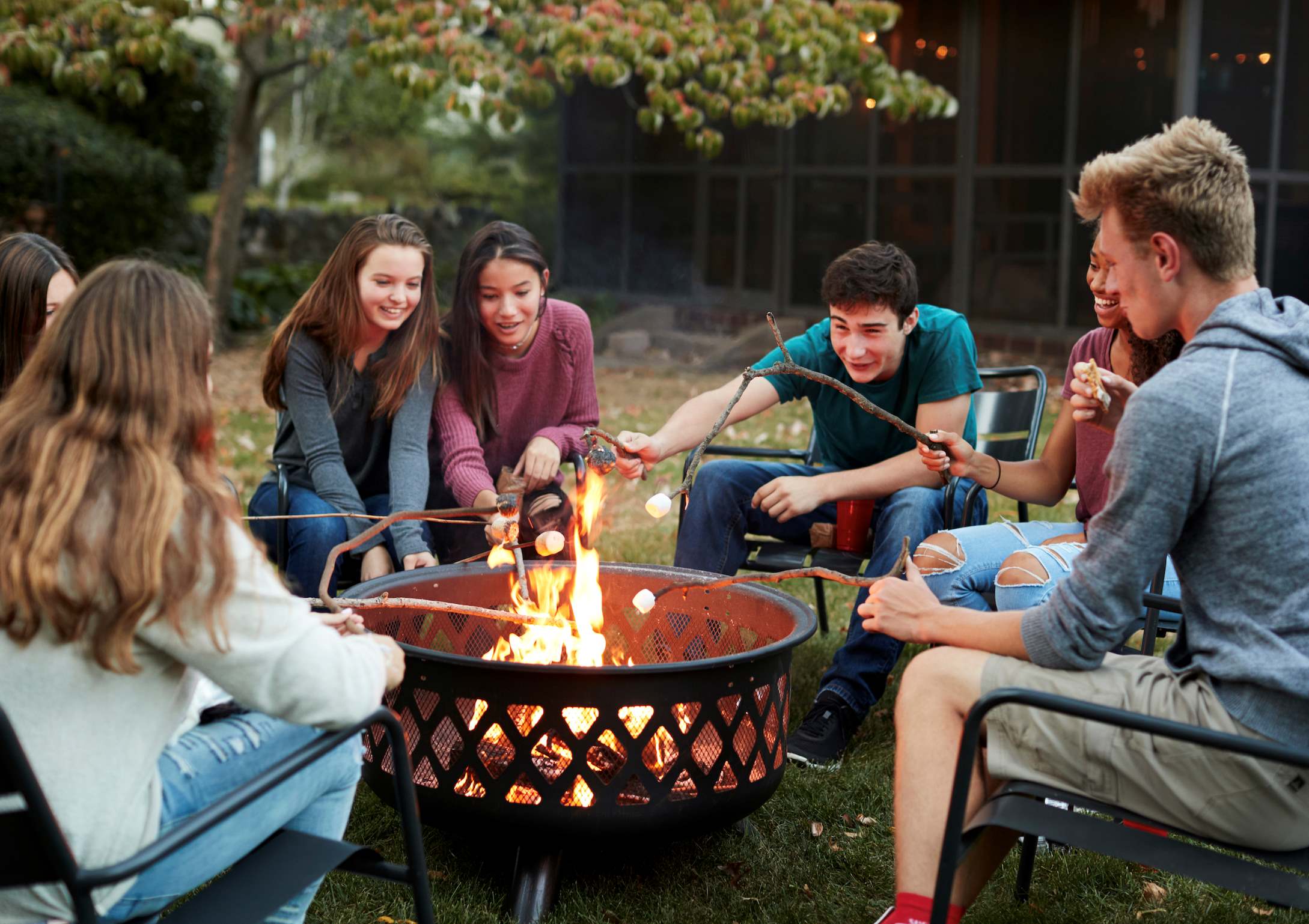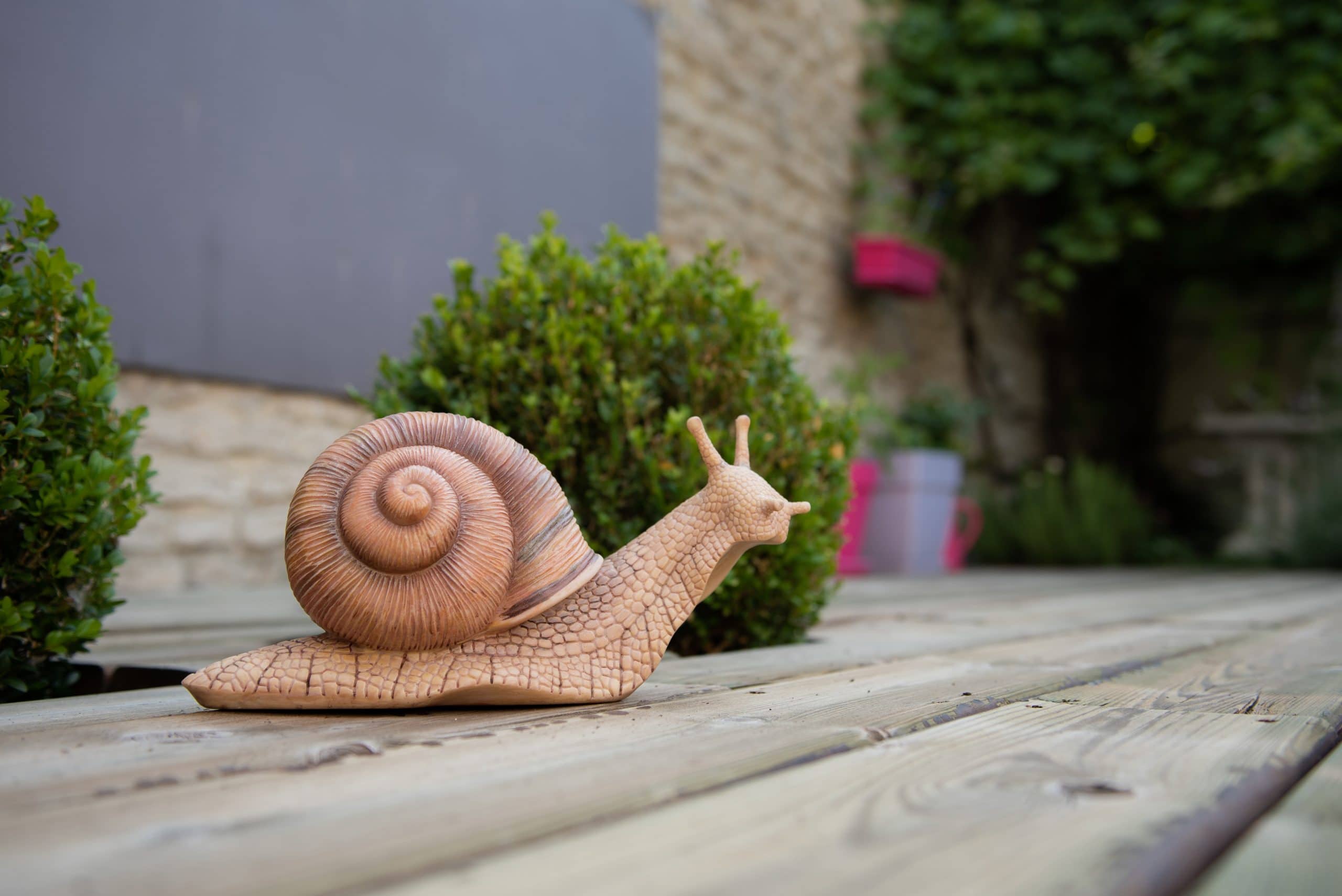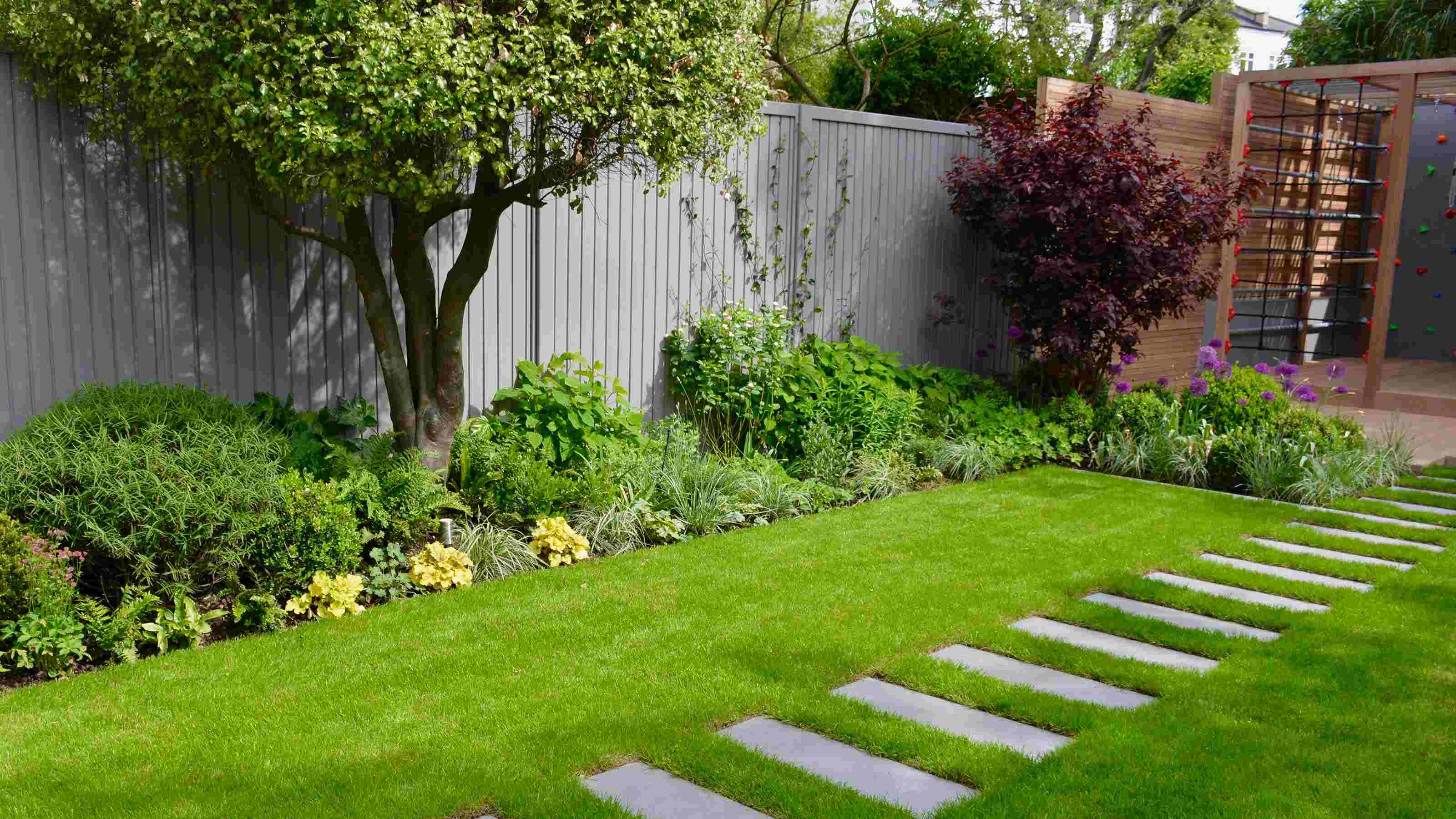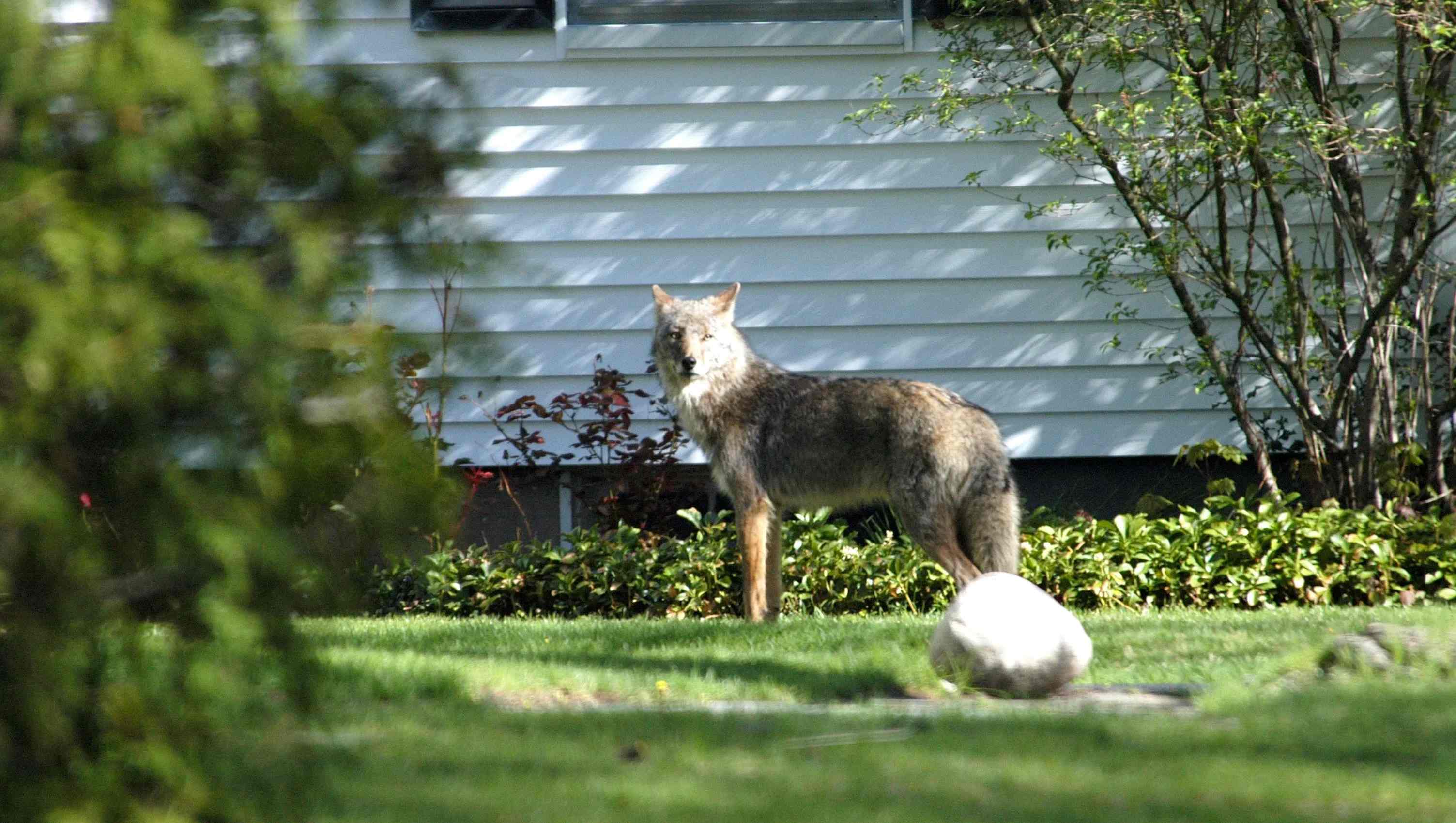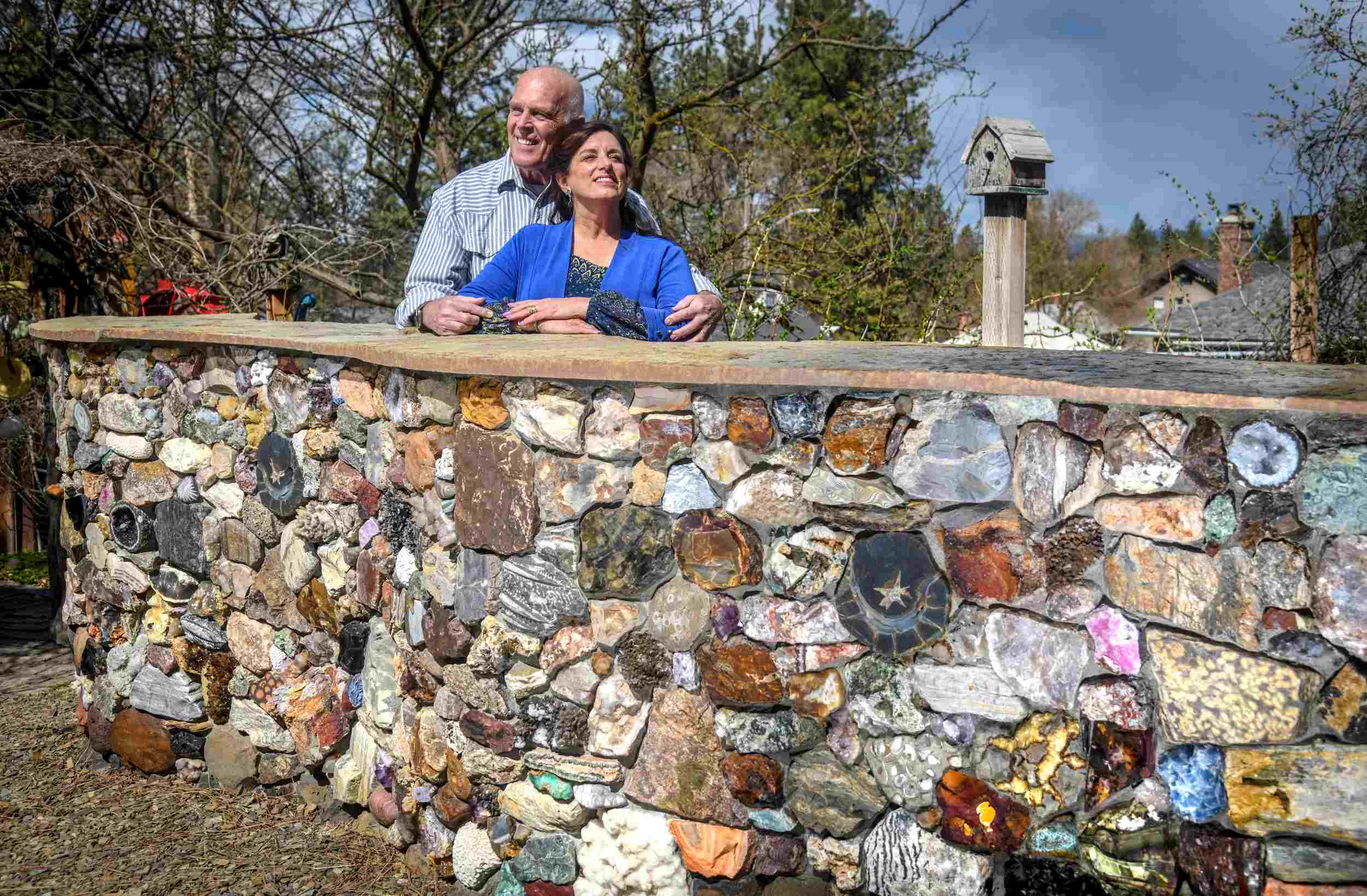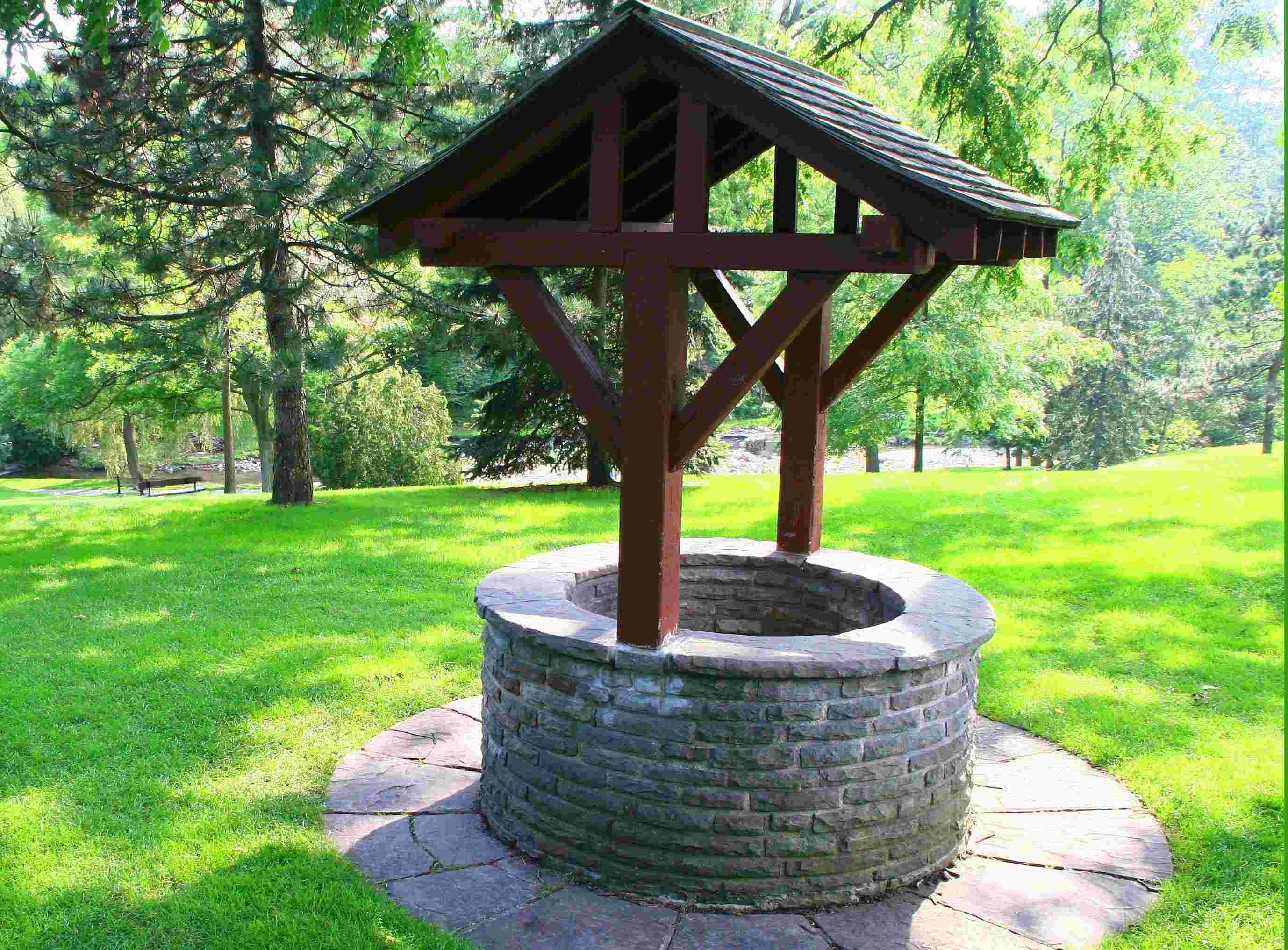Home>Types of Gardening>Edible Gardening>How To Grow Mushrooms In Your Backyard
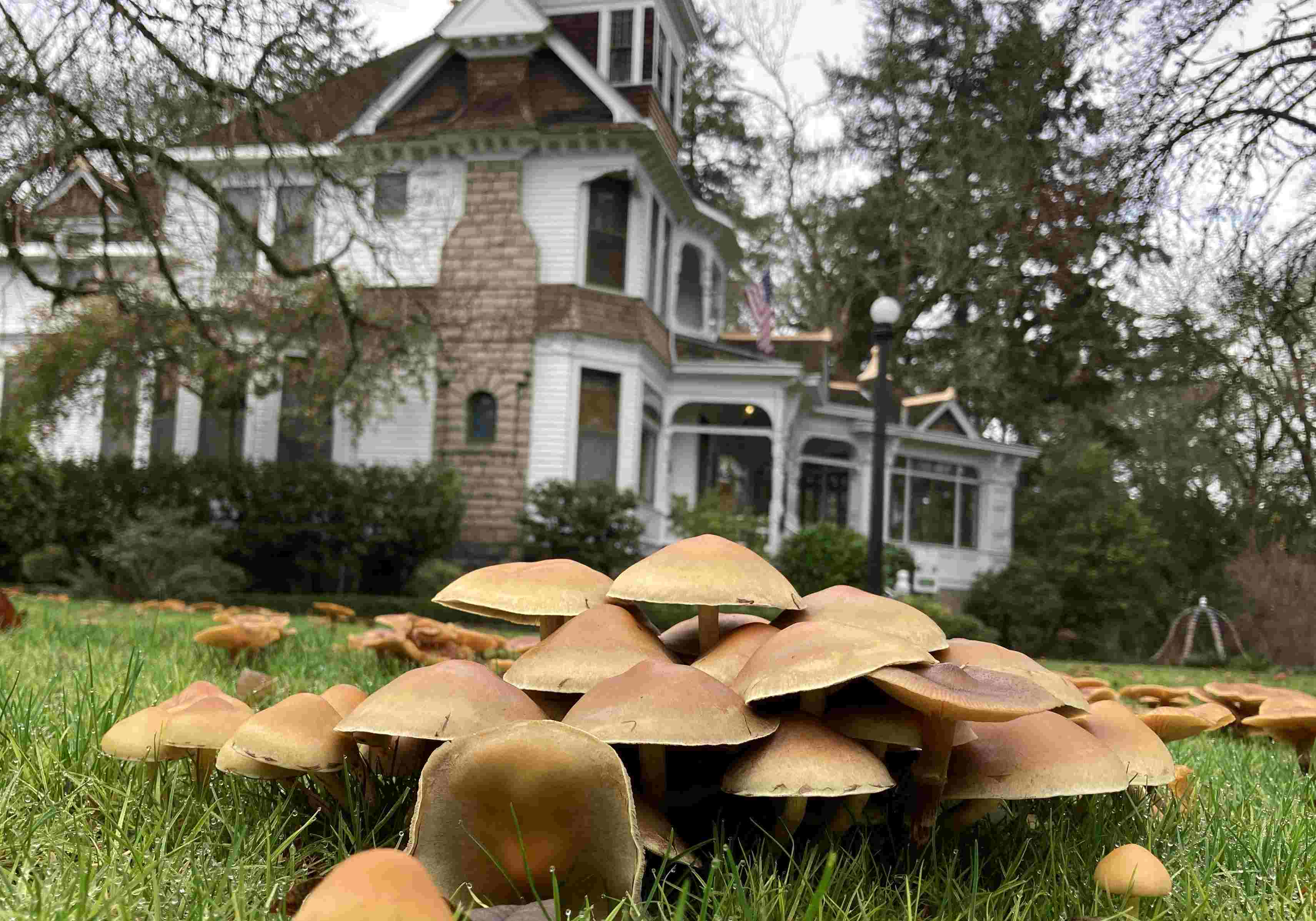

Edible Gardening
How To Grow Mushrooms In Your Backyard
Published: August 5, 2023
Learn how to grow edible mushrooms in your own backyard with our comprehensive guide on edible gardening. Transform your outdoor space into a fungi-filled haven!
(Many of the links in this article redirect to a specific reviewed product. Your purchase of these products through affiliate links helps to generate commission for Chicagolandgardening.com, at no extra cost. Learn more)
Table of Contents
Introduction
Welcome to the wonderful world of edible gardening! There’s nothing quite like the joy of growing your own food, and one of the most fascinating and rewarding crops to cultivate in your backyard is mushrooms. Whether you’re a seasoned gardener looking to expand your horizons or a beginner eager to delve into the world of edible fungi, this guide will walk you through the steps of growing mushrooms in your backyard.
Mushrooms are not only delicious but also packed with essential nutrients. They add a unique umami flavor to a wide range of dishes and can be grown in a small space with minimal effort. From the earthy notes of Portobello mushrooms to the delicate flavors of oyster mushrooms, there is a vast array of mushroom varieties to explore and experiment with.
Not only are mushrooms a flavorful addition to your meals, but they also offer a range of health benefits. Mushrooms are low in calories and fat, while being rich in vitamins, minerals, and antioxidants. They are known to boost the immune system, aid in digestion, and provide various medicinal properties. By growing your own mushrooms, you have control over their quality and ensure that they are free from chemicals and pesticides.
Don’t worry if you’re new to edible gardening; growing mushrooms in your backyard is a fun and accessible project for beginners. With the right steps and a little patience, you can enjoy the satisfaction of harvesting your own fresh mushrooms to enhance your favorite recipes.
In this comprehensive guide, we will take you through the step-by-step process of growing mushrooms in your backyard. From selecting the right mushroom variety to harvesting your bountiful crop, we’ll cover all the essential aspects to set you on the path to success. So, roll up your sleeves, put on your gardening hat, and let’s get started on this exciting edible gardening venture!
Step 1: Choosing the right mushroom variety
One of the first and most important steps in growing mushrooms in your backyard is selecting the right variety to cultivate. There are numerous types of mushrooms to choose from, each with its own unique flavors, growth requirements, and culinary uses. Consider the following factors when deciding on the mushroom variety:
- Taste and Culinary Uses: Different mushroom varieties offer distinct flavors and textures. For example, the earthy and meaty Portobello mushrooms are perfect for grilling or stuffing, while delicate oyster mushrooms are great for stir-fries and soups. Think about your personal preferences and how you plan to use the mushrooms in your cooking.
- Growth Requirements: Each mushroom variety has specific environmental conditions that promote optimal growth. Factors to consider include temperature, humidity, light exposure, and substrate requirements. It’s essential to choose a mushroom variety that matches the climate and conditions of your region to ensure successful cultivation.
- Availability of Spawn or Spores: Mushroom cultivation typically starts with the inoculation of a substrate with mushroom spawn or spores. Some mushroom varieties have readily available spawn or spores in nurseries or online stores, while others may require more specialized sources. Ensure that you can obtain the necessary materials for your chosen mushroom variety.
Here are a few popular mushroom varieties that are well-suited for backyard cultivation:
- Oyster Mushrooms (Pleurotus spp.): Oyster mushrooms are known for their delicate flavor and velvety texture. They are fast-growing, making them an excellent choice for beginners. Oyster mushrooms can thrive in a wide temperature range, making them adaptable to different climates.
- Shiitake Mushrooms (Lentinula edodes): Shiitake mushrooms are prized for their earthy and smoky flavor. They require a hardwood substrate such as oak or beech logs to grow successfully. Shiitakes prefer cooler temperatures and moderate shade, making them ideal for temperate regions.
- White Button Mushrooms (Agaricus bisporus): White button mushrooms are the most commonly cultivated mushroom variety. They have a mild taste and a firm texture, making them versatile for various culinary applications. They prefer a controlled indoor environment with stable temperature and humidity.
Take the time to research different mushroom varieties and their specific requirements. Consider your climate, available resources, and personal preferences when choosing the right variety for your backyard mushroom garden. Remember, each variety has its own unique character, so don’t be afraid to experiment and discover new flavors in your homemade harvest.
Step 2: Preparing the growing environment
Creating the ideal growing environment is crucial for the successful cultivation of mushrooms in your backyard. While different mushroom varieties have varying requirements, there are a few general steps you can follow to prepare a suitable environment:
- Selecting the Location: Choose a shaded area in your yard that receives indirect sunlight. Mushrooms require a cool, humid environment, making a shaded spot under trees or a covered patio ideal. Avoid areas with excessive wind or direct sunlight, as it can dry out the growing substrate.
- Creating the Growing Bed: Mushrooms grow on a substrate material, which acts as their source of nutrition. The most common substrate materials for backyard mushroom cultivation include straw, wood chips, sawdust, or a combination of these. Prepare the substrate by cleaning it, soaking it in water, and pasteurizing or sterilizing it to remove any unwanted microorganisms.
- Building a Mushroom Bed: Create a bed for your mushrooms by layering the substrate material in a shallow container or a designated growing area. The depth of the bed depends on the mushroom variety you are cultivating, ranging from a few inches to several feet. Ensure a uniform distribution of the substrate and pack it lightly to create a firm bed.
- Providing Proper Drainage: Mushrooms need a moist environment, but excessive water can cause them to rot. To prevent waterlogging, add drainage holes or a layer of gravel at the bottom of the growing container. This helps facilitate proper water drainage, ensuring that the substrate remains adequately moist without becoming waterlogged.
- Maintaining Optimal Humidity: Mushrooms thrive in high humidity conditions. To maintain the necessary moisture levels, cover your mushroom bed with a plastic sheet or use a humidifier, if necessary. Regularly monitor the humidity levels and mist the growing area with water to keep it moist but not saturated.
It is important to note that different mushroom varieties may have specific requirements for the growing environment. Some may prefer higher temperatures, while others may thrive in cooler conditions. Research the specific needs of your chosen mushroom variety and adjust the growing environment accordingly.
Remember, creating the right growing environment is crucial for the success of your mushroom cultivation. By providing the optimal conditions of shade, humidity, and substrate, you are setting the stage for a bountiful harvest of flavorful mushrooms in your very own backyard.
Step 3: Obtaining mushroom spores or spawn
Once you’ve chosen your desired mushroom variety and prepared the growing environment, the next step is to obtain the necessary mushroom spores or spawn for cultivation. Mushroom spores and spawn serve as the starting point for the growth and development of your mushrooms. Here are two common methods to acquire them:
- Collecting Spores: Collecting spores directly from wild mushrooms is an option if you have experience and knowledge in mushroom identification. Spores are microscopic reproductive cells that can be collected by cutting off the mature cap of a mushroom and placing it gill-side down on a clean piece of paper or aluminum foil. After a few hours, the spores will drop onto the surface. Once collected, the spores can be stored in a clean, airtight container for future use.
- Purchasing Spawn: Another reliable and convenient method is to purchase mushroom spawn. Spawn is a substrate already colonized by mushroom mycelium, the thread-like fungal network responsible for the growth of mushrooms. It comes in the form of grain, sawdust, or plugs. Spawn can be easily found from reputable sellers and nurseries, both online and offline. Choose a reliable source that offers spawn specifically for the mushroom variety you intend to grow.
When obtaining mushroom spores or spawn, it is important to ensure their quality and viability. Look for suppliers that provide fresh and healthy spores or spawn to increase your chances of successful cultivation. You may also want to consider selecting a supplier that offers guidance or support for beginners, as cultivating mushrooms can have its challenges.
Remember to handle spores and spawn with proper hygiene measures to prevent contamination. Clean your hands, tools, and work area thoroughly to minimize the risk of introducing unwanted bacteria or fungi. Treat the spores or spawn with care and follow any specific instructions provided by the supplier for the best results.
Obtaining reliable mushroom spores or spawn is a crucial step in the cultivation process. By starting with high-quality materials, you are setting the foundation for a successful mushroom harvest in your backyard. Take the time to research reputable suppliers and choose the method that best suits your level of experience and comfort.
Step 4: Preparing the substrate
Preparing the substrate is an essential step in growing mushrooms. The substrate acts as the food source for the mycelium to grow and eventually produce mushrooms. The type of mushroom you’re cultivating will determine the specific substrate requirements. Here’s an overview of the substrate preparation process:
- Selecting the Substrate: Different mushroom varieties have different preferences for substrates. Common substrate options include straw, wood chips, sawdust, coffee grounds, or a combination of these. Research the ideal substrate for your chosen mushroom variety, as it greatly influences the success of your cultivation.
- Cleaning the Substrate: Ensure that the substrate is clean and free from contaminants. Remove any visible debris, dirt, or unwanted fungal growth. Cleaning the substrate helps create a favorable environment for the mycelium to colonize without competition from other microorganisms.
- Soaking and Conditioning: Soak the substrate material in water to increase its moisture content. This step is particularly important for substrates like straw or wood chips that have low natural moisture. Depending on the substrate, soaking times can range from a few hours to overnight. After soaking, drain the excess water and allow the substrate to drain completely.
- Pasteurization or Sterilization: To eliminate competing microorganisms and pathogens, it’s necessary to pasteurize or sterilize the substrate. Pasteurization involves heating the substrate to a specific temperature, usually around 140°F (60°C), for a certain duration. Sterilization, on the other hand, involves subjecting the substrate to higher temperatures, typically above 212°F (100°C), for a longer period. The method you choose will depend on the substrate and mushroom variety you are cultivating.
- Cooling and Draining: After pasteurization or sterilization, allow the substrate to cool to room temperature and drain any excess moisture. The substrate should be damp but not overly wet. Excessive moisture can lead to mold or bacterial contamination that can hinder the growth of the mycelium.
It’s important to note that specific mushroom varieties may have unique substrate requirements and preparation methods. Some mushrooms thrive on straw beds, while others prefer a mixture of sawdust and grain. Research the needs of your chosen mushroom variety and follow specific instructions to ensure the best results.
Preparing the substrate properly sets the stage for successful colonization by the mushroom mycelium. Take your time to clean, soak, and condition the substrate, and follow appropriate pasteurization or sterilization techniques. By providing a clean and nutrient-rich substrate, you are laying the foundation for the growth and development of your mushrooms.
Step 5: Inoculation
Inoculation is the process of introducing mushroom spawn or spores to the prepared substrate. This step kickstarts the growth of mycelium, the thread-like network of fungal cells that will eventually give rise to mushrooms. Follow these steps to ensure a successful inoculation:
- Prepare a Sterile Environment: Before starting the inoculation process, make sure your work area is clean and sterile. Wipe down surfaces with a disinfectant, wear clean gloves, and use sterilized tools to prevent contamination.
- Choose the Inoculation Method: There are several methods for inoculating the substrate, including:
- Grain Spawn: If you’re using grain spawn, evenly distribute it throughout the substrate. Mix the spawn and substrate thoroughly, ensuring that the grains are well distributed.
- Sawdust Spawn: For sawdust spawn, create layers of substrate and spawn. Spread a layer of substrate, add a layer of spawn, and repeat until both are used up.
- Spore Print or Liquid Culture: If using spore prints or liquid culture, carefully distribute the spores or culture over the substrate surface.
- Achieve Even Distribution: Regardless of the inoculation method you choose, aim for an even distribution of spawn or spores throughout the substrate. This ensures uniform colonization and a higher chance of successful mushroom growth.
- Cover and Incubate: After inoculation, cover the substrate with a clean layer of plastic or a lid to create a controlled environment. Place the container or growing bed in a warm and dark location. Maintain a consistent temperature and humidity level to promote mycelium growth.
During the incubation period, the mycelium will gradually colonize the substrate, breaking it down and establishing a strong network of fungal threads. This process can take anywhere from a few weeks to several months, depending on the mushroom variety and environmental conditions.
It’s important to monitor the inoculated substrate for any signs of contamination or unusual growth. If you notice mold or strange odors, it may indicate contamination, and you may need to start over with a fresh batch of substrate and spawn.
Patience is key during the inoculation and colonization phase. Maintain the optimal environmental conditions, and allow the mycelium ample time to spread and establish itself within the substrate. Soon enough, you’ll start to see the exciting signs of mushroom formation.
Step 6: Maintaining optimal conditions
Maintaining optimal conditions for your mushroom cultivation is crucial to ensure healthy growth and bountiful harvests. Here are some key factors to consider in maintaining the ideal environment:
- Temperature: Different mushroom varieties have specific temperature requirements for their growth. It’s important to monitor and maintain the temperature within the optimal range. Some mushrooms prefer cooler temperatures, while others thrive in warmer conditions. Make sure you understand the temperature needs of your chosen variety and adjust accordingly.
- Humidity: Mushrooms thrive in a humid environment. Consistently maintain a high humidity level by misting the growing area with water or using a humidifier. Replenish the moisture as needed to prevent drying out, but be careful not to over-saturate the substrate, as it can lead to rot or mold growth.
- Light: Most edible mushrooms do not require direct sunlight for growth. They prefer indirect or diffused light. Keep the growing area in a shaded location or use artificial lighting, if necessary. Avoid exposing mushrooms to direct sunlight, as it can cause drying and hinder their growth.
- Airflow: While mushrooms require a humid environment, it’s also important to ensure proper airflow. Good airflow helps prevent the buildup of excess moisture and reduces the risk of fungal diseases. Ensure proper ventilation by occasionally opening the growing area or using fans to circulate the air.
- Monitoring and Adjusting: Regularly monitor the environmental conditions in and around the growing area. Use a thermometer to measure the temperature and a hygrometer to measure humidity levels. Make any necessary adjustments to maintain the optimal conditions for your mushroom variety.
Remember that maintaining the proper conditions is an ongoing process throughout the entire cultivation cycle. As your mushrooms grow, they may have slightly different needs during different stages of development. Stay attentive to any changes in the growth patterns or appearance of your mushrooms, as they can provide valuable insights into their overall health and well-being.
Additionally, be mindful of any signs of contamination, such as unusual colors, odors, or growth patterns, and take immediate action to address the issue if necessary. This can help prevent the spread of contaminants and ensure the success of your mushroom cultivation.
By paying careful attention to the temperature, humidity, light, and airflow, you can create and maintain the optimal conditions for your mushrooms to thrive. Stay vigilant and make adjustments as needed to support their growth and enjoy a successful harvest.
Step 7: Harvesting the mushrooms
Harvesting the fruits of your labor is one of the most exciting aspects of growing mushrooms in your backyard. Here are some key points to keep in mind when it comes to harvesting your mushrooms:
- Observe Mushroom Development: Different mushroom varieties have unique growth patterns, and it’s essential to familiarize yourself with the specific characteristics of your chosen variety. Keep an eye on the mushrooms as they develop, noting changes in size, color, and texture.
- Timing is Key: Harvest your mushrooms at the right time for optimal flavor and texture. Picking them too early may result in underdeveloped specimens, while waiting too long can lead to over-mature and less palatable mushrooms. Follow guides or instructions specific to your mushroom variety to determine the ideal harvesting time.
- Handle with Care: When harvesting mushrooms, use a sharp knife or scissors to cut the stem at its base. Avoid pulling or twisting the mushroom, as this can damage the mycelium and affect future harvests. Gently handle the mushrooms to prevent bruising or tearing.
- Collecting in Batches: It’s best to harvest mushrooms in small batches as they reach the appropriate size and maturity. This allows for a continuous harvest and gives younger mushrooms the chance to develop further. Leave some mature mushrooms in the growing area to release spores and stimulate the growth of future flushes.
- Inspect for Contaminants: Before consuming or storing your harvested mushrooms, inspect them for any signs of contamination or spoilage. Discard any mushrooms that show signs of mold growth, unusual colors, or sliminess. It’s important to prioritize your health and safety by only consuming mushrooms that appear healthy and fresh.
Remember, the harvested mushrooms are best when consumed or used within a few days to preserve their quality and flavor. If you have a surplus, consider sharing them with friends, family, or neighbors, or explore different preservation methods such as drying, freezing, or pickling to extend their shelf life.
Lastly, be sure to clean the growing area after each harvest to maintain a healthy and hygienic environment for future mushroom cultivation. This includes removing any spent substrate and maintaining proper sanitation practices.
Enjoy the fruits of your labor and savor the taste of homegrown mushrooms in your favorite recipes. Celebrate each harvest as a testament to your efforts and the joy of growing your own nutritious and delicious food right in your backyard.
Step 8: Storage and consumption
After harvesting your mushrooms, it’s important to properly store and consume them to ensure their freshness, flavor, and nutritional value. Here are some guidelines for storing and enjoying your homegrown mushrooms:
- Immediate Use: For the best flavor and texture, it’s ideal to use your freshly harvested mushrooms as soon as possible. Incorporate them into your meals within a few days of harvesting to enjoy their peak freshness.
- Refrigeration: If you’re not able to use the mushrooms immediately, store them in a paper bag or a breathable container in the refrigerator. Avoid using plastic bags, as this can retain moisture and cause the mushrooms to become slimy. Properly stored mushrooms can stay fresh for up to one week.
- Drying: Drying mushrooms is a popular preservation method that allows them to be stored for extended periods while retaining their flavor. To dry mushrooms, clean them thoroughly, slice them into thin pieces, and lay them out in a single layer on a drying rack or baking sheet. Place the rack in a well-ventilated area, away from direct sunlight, and let the mushrooms dry completely. Once dry, store them in an airtight container in a cool, dark place.
- Freezing: Freezing mushrooms is another viable option for long-term storage. Clean and slice the mushrooms, then blanch them in boiling water for a couple of minutes. Immediately transfer them to an ice bath to stop the cooking process. Once cooled, pat them dry and freeze them in a single layer on a baking sheet. Once frozen, transfer them to a freezer-safe container or bag. Frozen mushrooms can be stored for several months.
- Cooking and Preserving: There are numerous ways to enjoy your homegrown mushrooms in recipes. Sauté them as a side dish, add them to stir-fries, soups, stews, or pasta sauces, or use them as a topping for pizzas. You can also pickle mushrooms to enjoy their tangy flavor and extend their shelf life.
- Safe Consumption: It’s important to exercise caution when consuming wild mushrooms. Unless you are an experienced forager with a deep understanding of mushroom identification, it’s best to stick to commercially cultivated mushroom varieties or those obtained from reputable sources. If you are unsure about the safety of a mushroom, consult an expert or avoid consumption to prevent any potential health risks.
Remember, the flavor and texture of mushrooms can vary depending on the variety and how they are stored or prepared. Embrace experimentation and explore different cooking methods and recipes to fully enjoy the culinary possibilities of your homegrown mushrooms.
By properly storing and utilizing your harvest, you can savor the flavors of your hard work long after the growing season. Homegrown mushrooms offer a rewarding and delicious addition to your meals, providing a fresh and nutritious touch to your culinary creations.
Conclusion
Congratulations! You have completed the journey of growing your own mushrooms in your backyard. Through careful selection of the mushroom variety, preparing the growing environment, obtaining the necessary spores or spawn, and nurturing the mycelium to fruition, you have witnessed the magic of fungal growth firsthand.
By following the step-by-step process outlined in this guide, you have learned the importance of choosing the right mushroom variety and creating an optimal growing environment. From preparing the substrate to inoculating and maintaining the ideal conditions, you have gained the knowledge and skills necessary for successful mushroom cultivation.
As you progress through the different stages of mushroom growing – from selecting the substrate to harvesting and eventually enjoying your homegrown mushrooms – you have become part of the exciting world of edible gardening. Your efforts have brought forth a sustainable and delicious source of nutrition for your culinary endeavors.
Not only have you reaped the rewards of your harvest, but you have also become more connected to the food you consume. Growing mushrooms in your own backyard allows you to have control over the quality, freshness, and variety of the mushrooms you incorporate into your meals. From the earthy taste of oyster mushrooms to the smoky essence of shiitake mushrooms, you have expanded your culinary repertoire and awakened your taste buds to new flavors.
Whether you continue to cultivate mushrooms or explore other edible gardening ventures, remember that gardening is an ongoing learning experience. Embrace the cycles of growth and harvest, adapt to the challenges, and celebrate the rewards that come with nurturing and enjoying the fruits of your labor.
Now, armed with the knowledge and skills to grow mushrooms in your backyard, you can embark on your own edible gardening adventure. So, put on your gardening gloves, equip yourself with quality mushroom spawn or spores, and let your backyard become a haven for delicious and nutritious fungi.
Happy gardening and happy mushroom growing!
